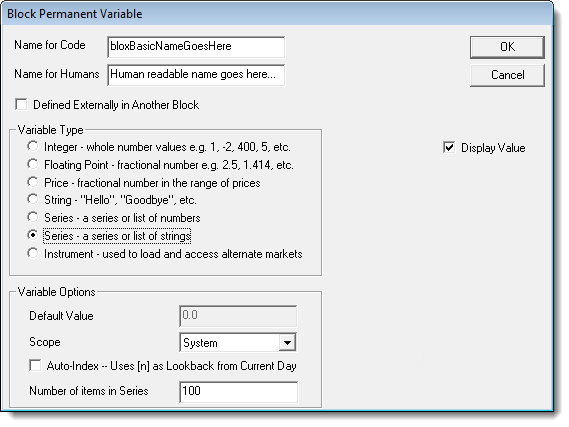String Series
Data-Type: |
Description: |
|---|---|
String Series |
All series, or arrays store numbers and text values in a series of individual variable elements. Each element stores the value it was assigned until it is cleared, or given a different value. Each element in a series is accessible by using its referenced location. Usually this referencing is to assign the location to an integer value that acts as a location reference, or an index to that elements location.
In simple terms a series is a list of elements that contain the values of Floating numbers in numeric arrays, or a series of String Alpha-Numeric characters in the elements in a String array.
Auto-Indexed series are accessed are reference by the specifying the offset value from the current bar to where that element will be located. For example, to access yesterday's series element, use a value of 1 as the offset amount.
Manually sized series are access an element by its count position within the series.
Smallest value of a series is 1, and 1 is always the position location of first element in the series. Use above information to determine if it is accessed by offset reference, or direct location reference. |
Dialog Example: |
|---|
Series data types can be Auto-Indexed, or they can be manually indexed. If there needs to be a series element for a named series to match the count of an instrument's data records, then use the default setting of Auto-Index.
A series that doesn't need to align to the instrument's data records, but might contain less or more information, use the manual index option and control the indexing and the sizing of the series with your program's source code. |
Links: |
|---|
|
See Also: |
Edit Time: 9/12/2020 10:28:46 AM |
Topic ID#: 587 |

